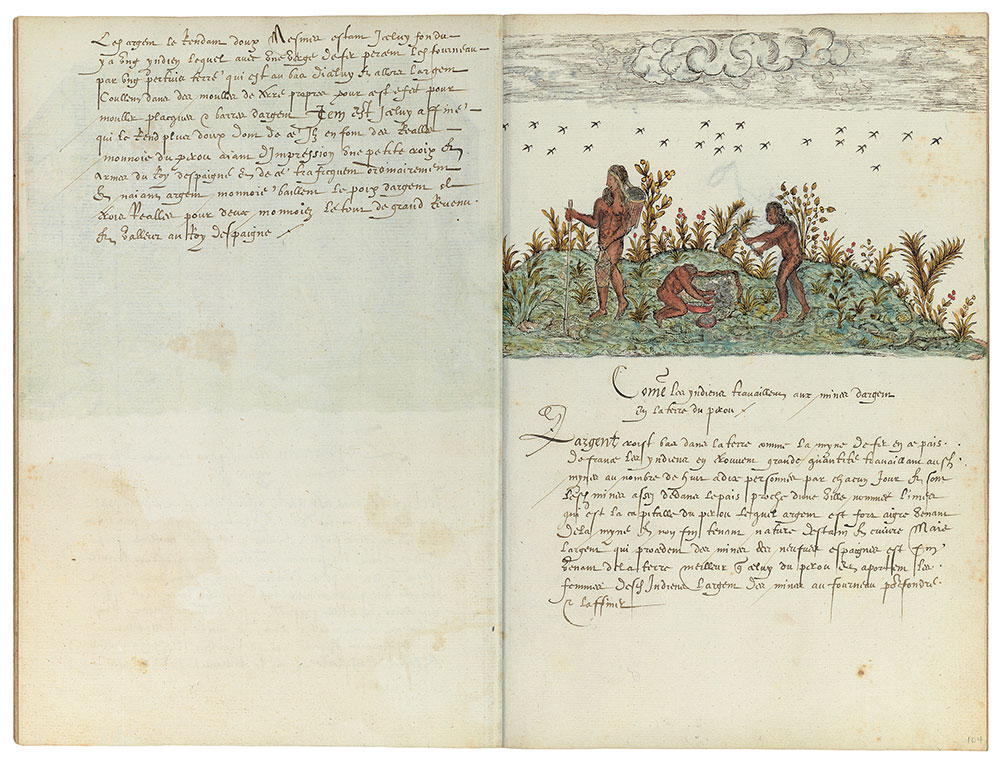
Histoire Naturelle des Indes
Illustrated manuscript
Bequest of Clara S. Peck, 1983
In 1983, The Morgan Library & Museum received, as the bequest of Clara S. Peck, an extraordinary volume whose beautiful paintings and descriptions document the plant, animal, and human life of the Caribbean late in the sixteenth century. Spaniards had already begun to exert influence over the indigenous people of the area when explorers from England and France arrived, among them Sir Francis Drake. The volume, known as the Drake Manuscript and titled Histoire Naturelle des Indes when it was bound in the eighteenth century, gives us a wonderful picture of daily life at the time of Drake's many visits to the region. Although Drake's connection to the manuscript is uncertain, he is mentioned on more than one occasion by the authors. Drake himself is known to have painted, but none of his work survives.
Contents: 199 images of West Indian plants, animals and human life, with accompanying manuscript captions written in late sixteenth-century French.
Medium: Most of the illustrations consist of a black chalk underdrawing and a combination of pen and brown ink with watercolor; on some images selected areas have also been glazed with a gum.
Binding: Bound or rebound in brown leather in the late 18th century.
Pagination: Penciled folio numbers (1–125) in lower right corner of each page were added by The Morgan Library & Museum. Folios 92v–93, 93v–94, and 95v–96 are fold-out leaves.
Continued from fol. 103
of the silver, making it soft. When it has been melted, one of the Indians pierces the furnace with an iron rod through an opening at ground-level at the bottom of the foresaid furnace. The silver flows into the proper clay molds forming silver plaques and bars. Also when the silver is so refined that it is even softer, they make Reales, the coins of Peru, from it which show the impression of a small cross and the royal arms of Spain. They usually trade with them, and if they do not have silver coins, they give the weight in silver of three Reales for two coins, all this being good revenue and value for the King of Spain.
Come Les Yndiens Trauaillent Aux Mines Dargent En La Terre Du Perou (How the Indians Work in the Silver Mines of Peru)
Silver grows deep in the soil like iron ore in France. The Indians find great quantities working in the mines in a group of eight to ten persons every day. The mines are far in the interior of the country, close to a city called Lima, capital of Peru. This silver is very sour coming from the mine and not fine, having the quality of tin and copper. But silver from the mines of New Spain is fine as it originates in better soil than that of Peru. The wives of the Indians carry the silver from the mines to the furnace for smelting and refining.
